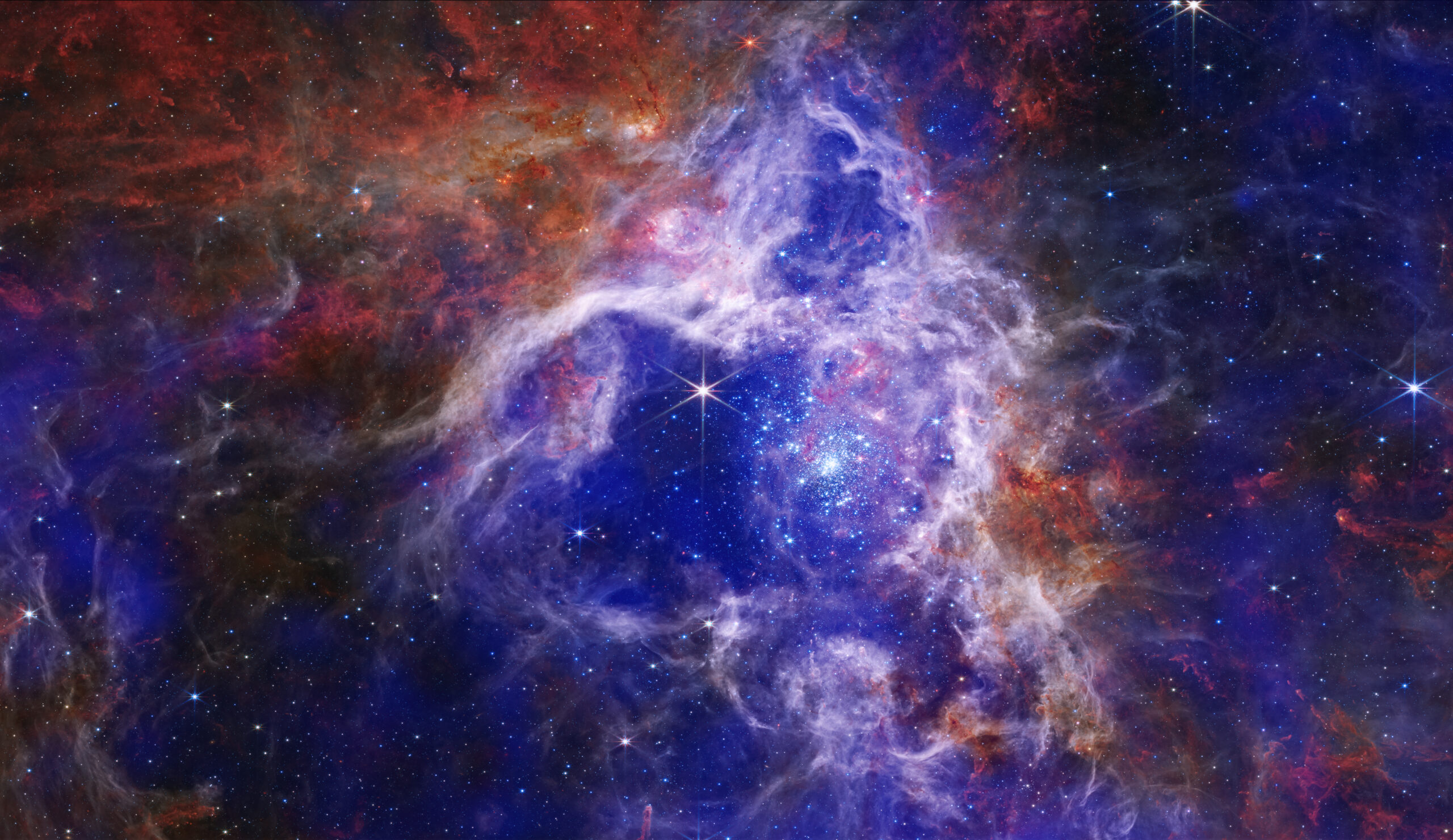NASA’s Progress in Artemis Campaign and its Impact on Space Exploration
NASA continues to make significant progress in its Artemis campaign, a multi-faceted space exploration initiative aimed at returning humans to the Moon and eventually reaching Mars. The latest developments involve the transportation of key components for the Space Launch System (SLS) rocket to NASA’s Kennedy Space Center. On August 28, NASA and Boeing teams loaded the core stage boat-tail for Artemis III and the core stage engine section for Artemis IV onto the agency’s Pegasus barge at the Michoud Assembly Facility.
The core stage hardware joins the launch vehicle stage adapter for Artemis II, which was loaded onto the barge at NASA’s Marshall Space Flight Center on August 21. The Pegasus barge will transport these components over 900 miles to the Space Coast of Florida. Once at the Kennedy Space Center, NASA’s Exploration Ground Systems Program teams will prepare the launch vehicle stage adapter for Artemis II stacking operations inside the Vehicle Assembly Building. The core stage hardware will be moved to Kennedy’s Space Systems Processing Facility for further outfitting. Starting with Artemis III, the final assembly of core stages will take place at Kennedy.
The launch vehicle stage adapter plays a crucial role in connecting the rocket’s core stage to the upper stage. It also protects sensitive avionics and electrical components in the rocket’s interim cryogenic propulsion stage from the intense vibrations and noise generated during launch.
The core stage boat-tail and engine section are essential for the rocket’s functionality. The boat-tail extends from the engine section, providing protection for the rocket’s engines during launch. The engine section itself contains over 500 sensors, 18 miles of cables, and critical systems for fuel management and engine control, all of which are housed within the towering 212-foot core stage.
NASA has set ambitious goals for the Artemis program, including landing the first woman, the first person of color, and its first international partner astronaut on the Moon. The SLS is a cornerstone of NASA’s deep space exploration efforts, working in tandem with the Orion spacecraft, supporting ground systems, advanced spacesuits and rovers, the Gateway in orbit around the Moon, and commercial human landing systems. The SLS is the only rocket capable of sending Orion, astronauts, and supplies to the Moon in a single launch.
NASA’s Student Launch Competition: A Platform for Future Aerospace Professionals
NASA’s Student Launch competition, now in its 25th year, has released its 2025 handbook. The competition challenges middle school, high school, and college students to design, build, test, and launch a high-powered amateur rocket with a scientific or engineering payload. Teams must submit their proposals by September 11 for the event scheduled next spring near NASA’s Marshall Space Flight Center.
Each year, NASA updates the university payload challenge to align with current scientific and exploration missions. For the 2025 season, the payload challenge draws inspiration from the Artemis missions, which aim to land the first woman and first person of color on the Moon. This year’s challenge focuses on communications, requiring the STEMnaut "crew" to relay real-time data to the student team’s mission control, echoing the communications needs for future Artemis missions.
The competition has grown significantly since its inception in 2000, when it started with just two universities competing. Over the years, thousands of students have participated, many of whom have gone on to pursue careers at NASA. The Student Launch program is part of NASA’s broader effort to inspire and cultivate the next generation of aerospace professionals and space explorers.
NASA’s Human Exploration Rover Challenge: Expanding Opportunities
Following the success of the 2024 competition, NASA is expanding its Human Exploration Rover Challenge (HERC) to include a remote-control division and inviting middle school students to participate. The 31st annual competition is scheduled for April 11-12, 2025, at the U.S. Space & Rocket Center, near NASA’s Marshall Space Flight Center.
The new remote-control division, known as Remote-Operated Vehicular Research (ROVR), lowers the barrier to entry for schools that lack manufacturing facilities or technical mentorship. This division provides a safer and less physically intensive way for middle school teams to participate.
The 2025 challenge removes task sites on the course for the human-powered rover division, allowing teams to focus solely on their rover’s design. This change aims to put competitors in the mindset of the Artemis campaign, simulating the experience of astronauts piloting a vehicle on the lunar surface while overcoming various obstacles.
Students interested in designing, developing, building, and testing rovers for Moon and Mars exploration are encouraged to submit their proposals to NASA by September 19. The competition has seen participation from over 1,000 students across 72 teams globally, making it a significant platform for young innovators.
NASA’s Chandra X-ray Observatory: Celebrating 25 Years of Space Exploration
Twenty-five years ago, NASA introduced the world to the Chandra X-ray Observatory with the release of its first images. To mark this milestone, NASA has released new sonifications of three images, including the well-known Cassiopeia A (Cas A). Sonification is the process of translating astronomical data into sound, providing an alternative way to experience the data.
The sonification of Cas A features data from Chandra, NASA’s James Webb, Hubble, and the retired Spitzer space telescopes. The process starts at the neutron star at the center of the remnant and moves outward. The brighter parts of the image are represented by louder and higher-pitched sounds. X-ray data from Chandra are mapped to modified piano sounds, while infrared data from Webb and Spitzer are assigned to various string and brass instruments. Stars detected by Hubble are played with crotales, or small cymbals.
Another sonification features 30 Doradus, a large and bright star formation region. This sonification combines X-rays from Chandra with infrared data from Webb. The scan moves from left to right, with the volume corresponding to the brightness and light toward the top of the image mapped to higher-pitched notes. Chandra’s X-rays are heard as airy synthesizer sounds, while Webb’s infrared data are mapped to a range of sounds, including soft, low musical pitches and wind-like sounds.
The final sonification is of NGC 6872, a large spiral galaxy. The scan sweeps clockwise, with brightness controlling the volume and light farther from the center mapped to higher-pitched notes. Chandra’s X-rays are represented by a wind-like sound, while the core of NGC 6872 is heard as a dark low drone. The blue spiral arms, indicating active star formation, are audible as brighter, more highly pitched tones.
These sonifications provide a unique way to experience astronomical data, enhancing our understanding of the universe. More information about the NASA sonification project can be found here.
NASA’s Europa Clipper Mission: Preparing for Jupiter’s Moon Europa
NASA’s Europa Clipper spacecraft has been outfitted with large solar arrays at the Kennedy Space Center. Each array measures about 46½ feet long and 13½ feet high, making them the largest developed for a planetary mission. These arrays are essential for the spacecraft’s investigation of Jupiter’s moon Europa, which is five times farther from the Sun than Earth.
The arrays will be folded up and secured against the spacecraft’s main body for launch. Once deployed in space, Europa Clipper will span more than 100 feet, a few feet longer than a professional basketball court. The arrays are designed to operate in extreme cold, with temperatures plunging to minus 400 degrees Fahrenheit when in Jupiter’s shadow.
Europa Clipper’s mission is to determine the thickness of Europa’s icy shell, investigate its composition, and characterize its geology. The spacecraft will use a suite of science instruments to find out whether the ocean beneath Europa’s ice shell has conditions that could support life.
NEO Surveyor: NASA’s New Asteroid-Hunting Spacecraft
NASA’s Jet Propulsion Laboratory is developing the NEO Surveyor, a cutting-edge infrared space telescope designed to seek out asteroids and comets that might pose a hazard to Earth. Scheduled for launch in late 2027, the spacecraft will travel to the L1 Lagrange point between Earth and the Sun. From this vantage point, its large sunshade will block sunlight, allowing the mission to discover and track near-Earth objects approaching from the Sun’s direction, which is difficult for other observatories to do.
NEO Surveyor relies on advanced detectors that observe two bands of infrared light, enabling it to find dark asteroids and comets that don’t reflect much visible light. The mission’s goal is to discover and characterize at least 90% of near-Earth objects more than 460 feet across that come within 30 million miles of Earth’s orbit.
The spacecraft’s only instrument is its telescope, built from solid aluminum mirrors shaped and polished using a diamond-turning machine. These mirrors are attached to the telescope’s optical bench, and the telescope will eventually be installed inside the spacecraft’s instrument enclosure.
Boeing’s Starliner Spacecraft: Preparing for Return to Earth
NASA will provide live coverage of Boeing’s Starliner spacecraft departure from the International Space Station and return to Earth. The uncrewed spacecraft is scheduled to autonomously undock from the space station on September 6 and land at White Sands Space Harbor in New Mexico later that day.
NASA’s live coverage will stream on NASA+, the NASA app, and the agency’s website. The Starliner mission faced challenges, including helium leaks and issues with the spacecraft reaction control thrusters. As a result, NASA decided to return the spacecraft to Earth without a crew for safety reasons. Astronauts Butch Wilmore and Suni Williams, who launched aboard Starliner, will remain on the space station and return home in February 2025 aboard the SpaceX Dragon spacecraft.
These developments highlight NASA’s ongoing efforts to advance space exploration, inspire future generations, and ensure the safety and success of its missions.
For more Information, Refer to this article.


































